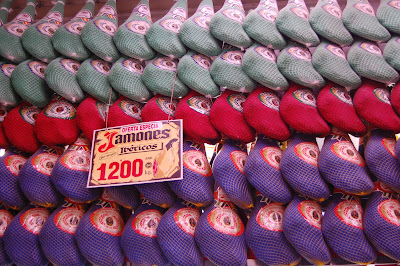Jill and I spent at least an hour wandering around inside the Mezquita-Cathedral. As I mentioned in yesterdays post the architecture was simply stunning. Here are some photos, even though it's so much better to see in person!
You might be able to tell that the alternating red and white arches in the first and second photos look a bit different than in the third photo. Because the mosque was enlarged at various times, different techniques were used to achieve the look. In the first two photos actual red bricks were used while in the third photo the look was achieved by painting red onto the arches. Another interesting fact is that there are 856 columns (of the original 1,293 before the cathedral was built into the mosque) of jasper, onyx, marble, and granite supporting the arches.
We were lucky and arrived for our visit early enough to witness mass being held in the cathedral. The priests were singing and the atmosphere was overwhelming.
You might be able to tell that the alternating red and white arches in the first and second photos look a bit different than in the third photo. Because the mosque was enlarged at various times, different techniques were used to achieve the look. In the first two photos actual red bricks were used while in the third photo the look was achieved by painting red onto the arches. Another interesting fact is that there are 856 columns (of the original 1,293 before the cathedral was built into the mosque) of jasper, onyx, marble, and granite supporting the arches.
We were lucky and arrived for our visit early enough to witness mass being held in the cathedral. The priests were singing and the atmosphere was overwhelming.





















































